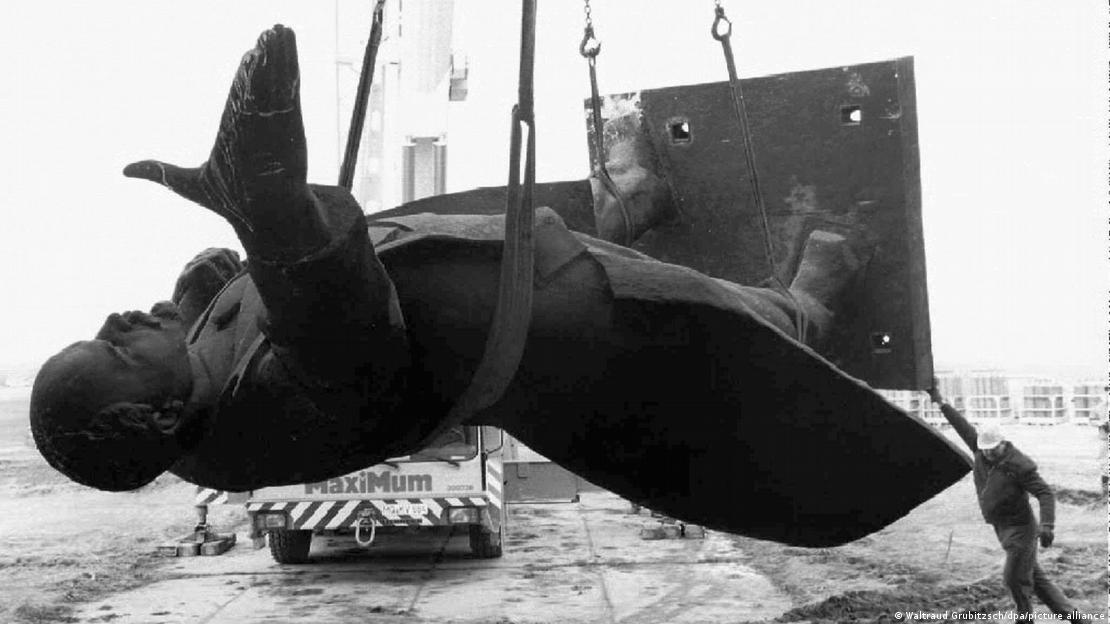On January 21, 1924, one of the men who defined the 20th century died. Putin and his ilk attack Lenin as the “architect of Ukraine”. But in Germany, monuments from the communist era still mark his historical presence.
(DW) In Russia, the leader of the international proletariat Vladimir Lenin is remembered only rarely: on the day of his birth or death – or when Vladimir Putin cites him as the “architect of Ukraine”.
According to the Russian president, the neighboring country was “the result of Bolshevik politics”. In February 2022, a few days before Russia started its war against Ukraine, he announced that he would need to eliminate the unintended consequences of Lenin’s actions – he campaigned for the right of nations to self-determination and firmly believed that national cultures would die out.
The Kremlin characterized the revolutionary, who died on January 21, 1924, as the “bad boy” who destroyed the great and strong Russian empire. According to Austrian historian Hannes Leidinger, co-author of the book Lenin. Biographie. Neubewertung (Lenin. Biography. Reassessment), this character is deeply disliked by Putin and his entourage precisely because of his revolutionary character.
“Lenin is chaos. Lenin is discord. Lenin is everything Russia doesn’t want in its self-image,” he explains. In addition, “he is criticized for his partial collaboration with the Germans in the First World War, in other words, with the enemy.”
“And perhaps the most important reason for criticism is its nationalities policy. Although he was a protagonist in the class struggle, in the end he was convinced that the unity of the proletarians of all countries would be restored, but that for the time being the question of nationalities in the Soviet Union called for a federalist solution. And in his speeches he also spoke out in favor of self-determination, even to the point of disengagement. And now that’s a thorn in Putin’s side.”
In Russia, Lenin has been knocked off his pedestal as a historical figure. “On the other hand, this Lenin remains a monument to the Soviet Union, to the expansion of the empire, to imperial power. And in the struggle for memorials, it is precisely in Ukraine that he once again fills a role that suits the Kremlin perfectly,” explains Leidinger.

The living dead live on
Lenin’s mausoleum in Moscow was originally erected only temporarily in 1924, to give everyone who wanted to the chance to say goodbye to him. However, the farewell was extended significantly, and the revolutionary’s body lies in Red Square to this day. Why doesn’t the Russian leadership want to bury him?
“Lenin still has a certain significance, not as a politician or historical figure, but as a symbol of the Soviet Union,” answers Leidinger. There is a mausoleum, but there are no more big ceremonies, it’s a relic of the past, a historical monument. “But the main thing is that Lenin is still in limbo, like a kind of ‘living dead’, between his final farewell and his role as a Soviet symbol. So Lenin is not completely dead.”
The book Lenin lebt. Seine Denkmäler in Deutschland (Lenin lives. His memorials in Germany), published by 8. Mai, is dedicated to the Leninist monuments on German soil, some of which are seriously damaged and have fallen into oblivion. Its author, Carlos Gomes, was born in Portugal.
“I’ve always had a personal and political interest in Soviet history, above all in the October Revolution, which had great potential in relation to labor rights, women’s rights, anti-colonialism and even anti-Semitism. However, I was quite surprised to discover a memorial to Lenin in Germany ten years ago. So he hasn’t completely disappeared from the country. That’s how this project came about.”
The memorial Gomes discovered in 2014 is in Wünsdorf, Brandenburg, where the headquarters of Soviet troops in the communist German Democratic Republic (GDR) was located. From then on, he decided to investigate where other tributes to the Russian leader were preserved, such as mosaics, statues and plaques. In 2023, his book was reissued in an expanded edition, containing new findings.
“Personally, I am impressed by the monument in front of the former officers’ house in Wünsdorf. It has retained its former strength and radiance, but at the same time it is clear that time has not passed it by without leaving a mark.” Today, this is the largest Lenin statue in Germany, as other large ones have been removed from their pedestals.

After Lenin, Stalinism
Among the Leninist memorials on German soil, some were brought from the Soviet Union to Germany by the Wehrmacht, the Nazi armed forces, in order to be melted down and used as raw material for the arms industry. For Gomes, “these statues are not just a reminder of Lenin, but also of the crimes of the Second World War”.
Thousands of books and dissertations have been written about Vladimir Lenin (1870-1924). Both Leidinger and Carlos Gomes agree on one point: he transformed not just Russia, but the whole world, fanatically devoting himself to an idea and subordinating everything around him to its realization, regardless of losses.
*** Translated with DEFCONPress FYI Team ***
